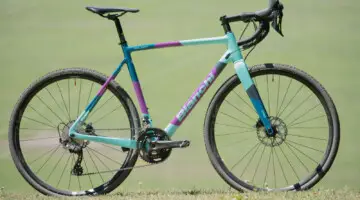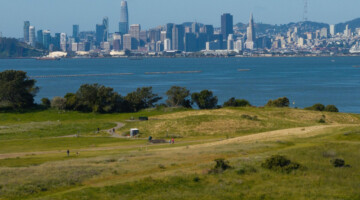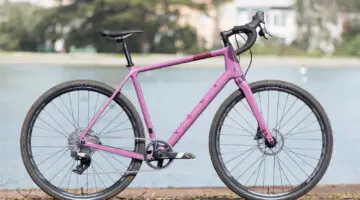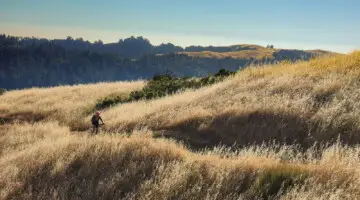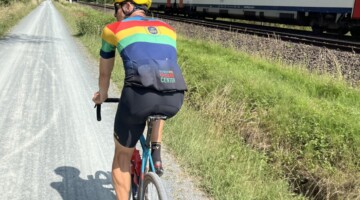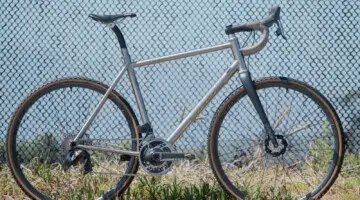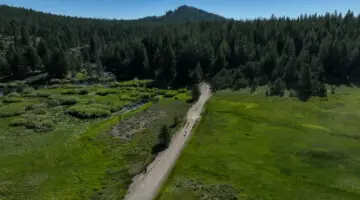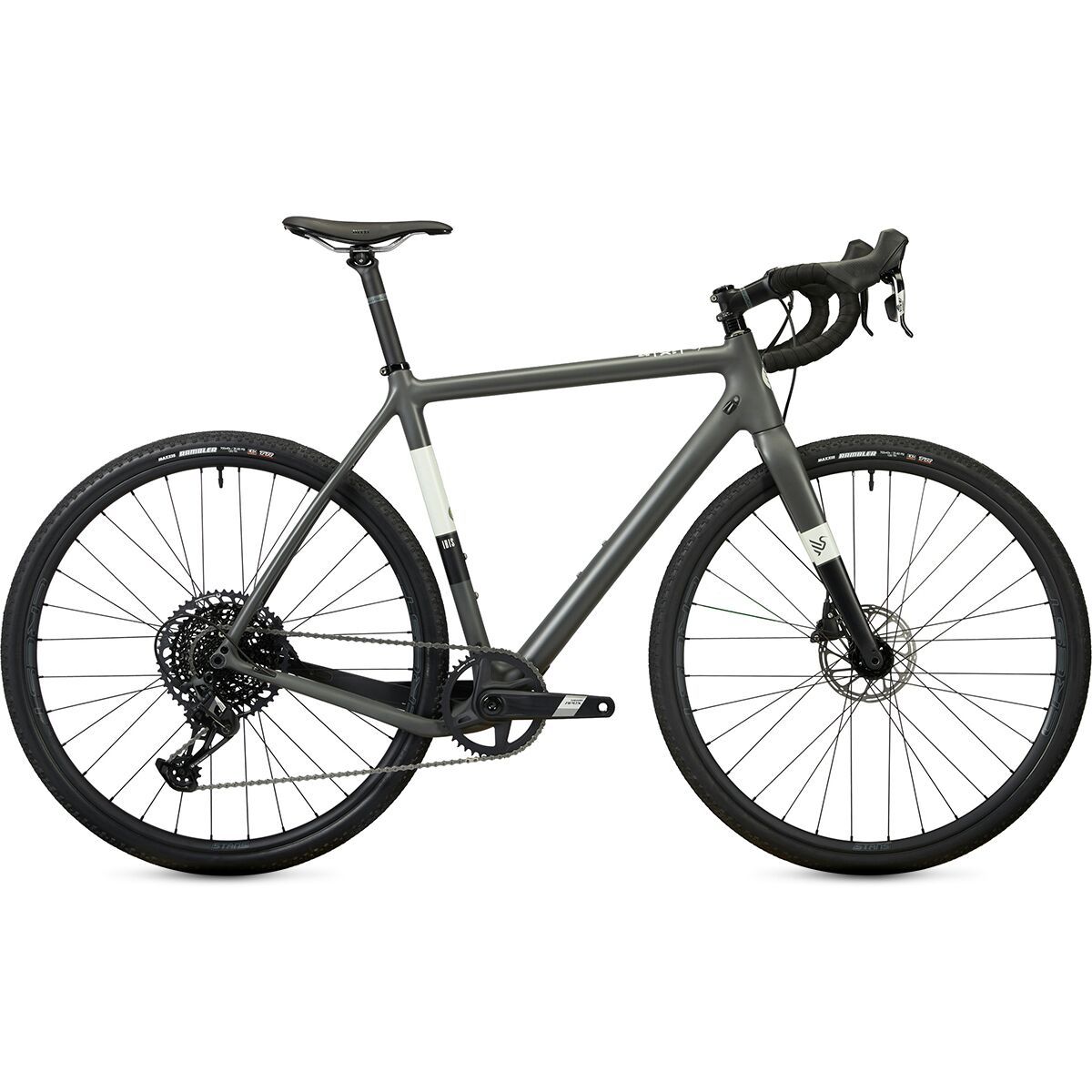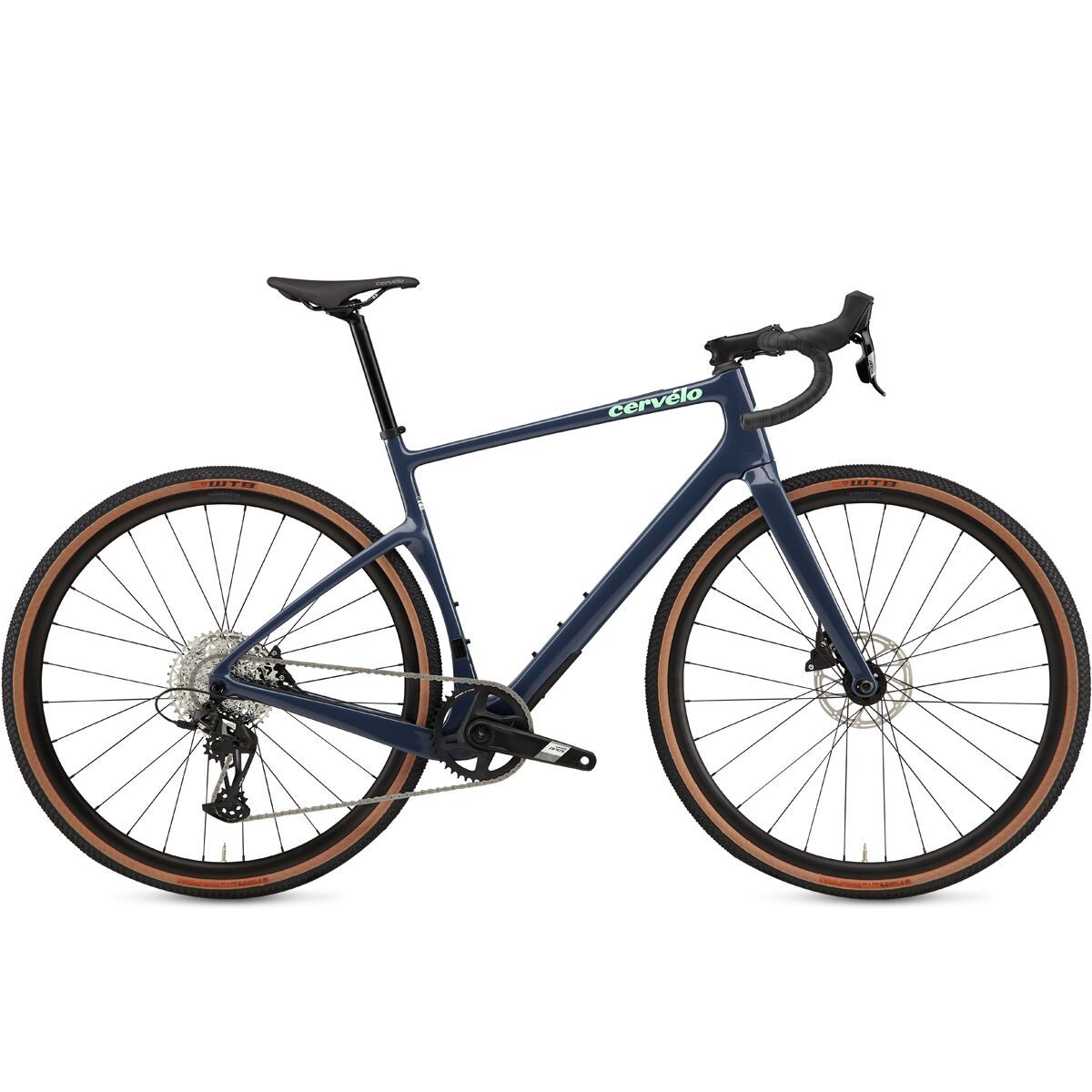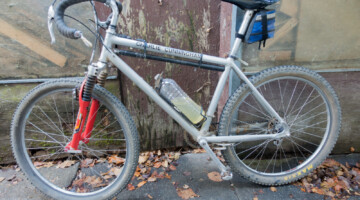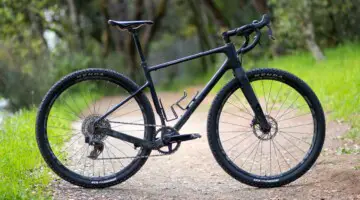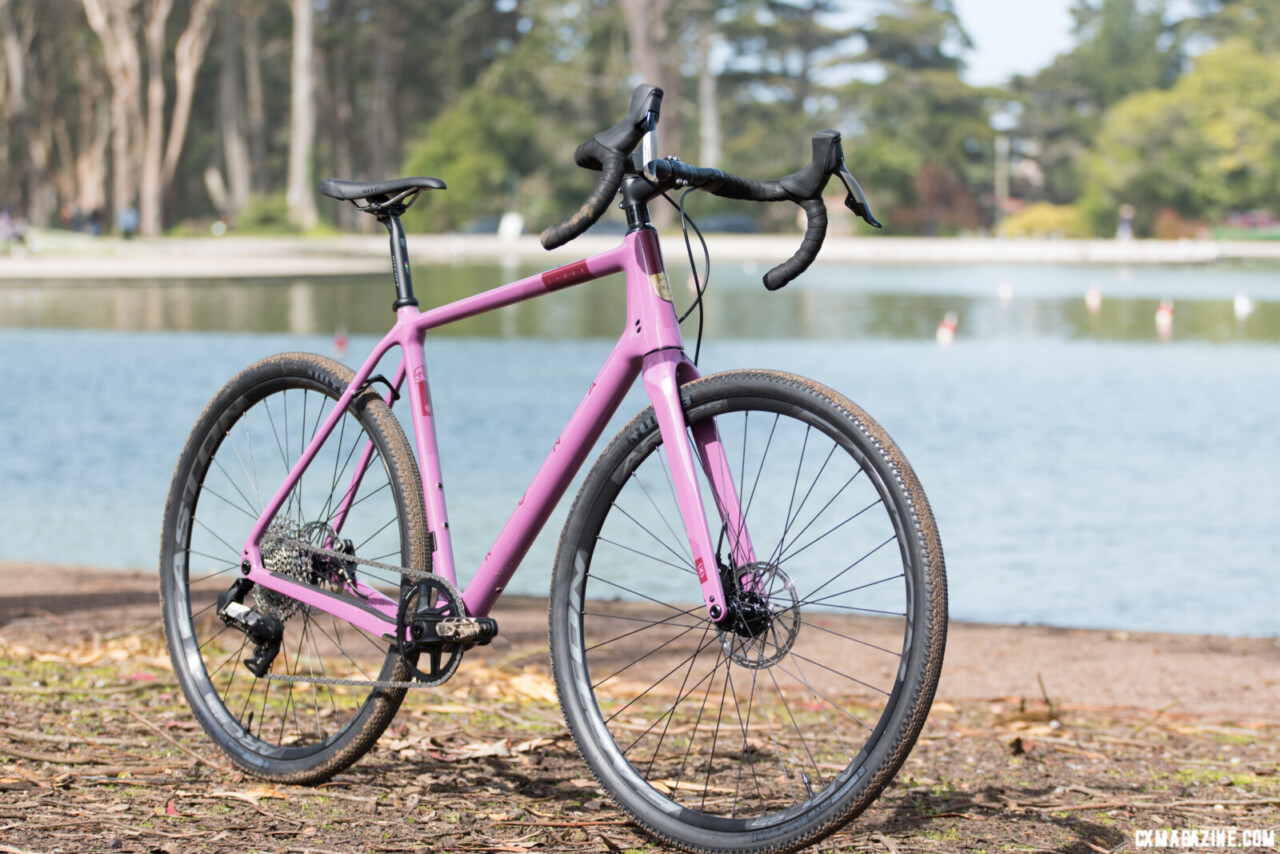
Kona Libre CR, a new model for 2025. ©C. Lee/Cyclocross Magazine
Last year, we rode and reviewed the Kona Ouroboros Supreme, an adventure bike with top-end components. Kona, sold and re-purchased by its founders in 2024, is on a roll with new bikes. The 2025 Libre CR is a complete redesign of the Libre model. We reviewed the Libre DL in 2018. That bike was a light, gravel-oriented bike. The new Libre CR fills the same shoes, but is an example of the evolution of gravel bikes. The original Libre was based on the Major Jake as gravel bikes evolved from cyclocross bikes. Since gravel riding is a spectrum of off-road riding from one-day racing events to multi-day adventures, Kona looks to have an offering for most riders. The new Libre CR aims a bit more to the faster, shorter end of gravel riding, but still seems rugged and versatile enough to go beyond that.
The New Libre CR Frame
The Libre CR is barely heavier, longer in front, and slightly shorter out back than its predecessor. The tube walls are thicker, which should result in greater impact durability.
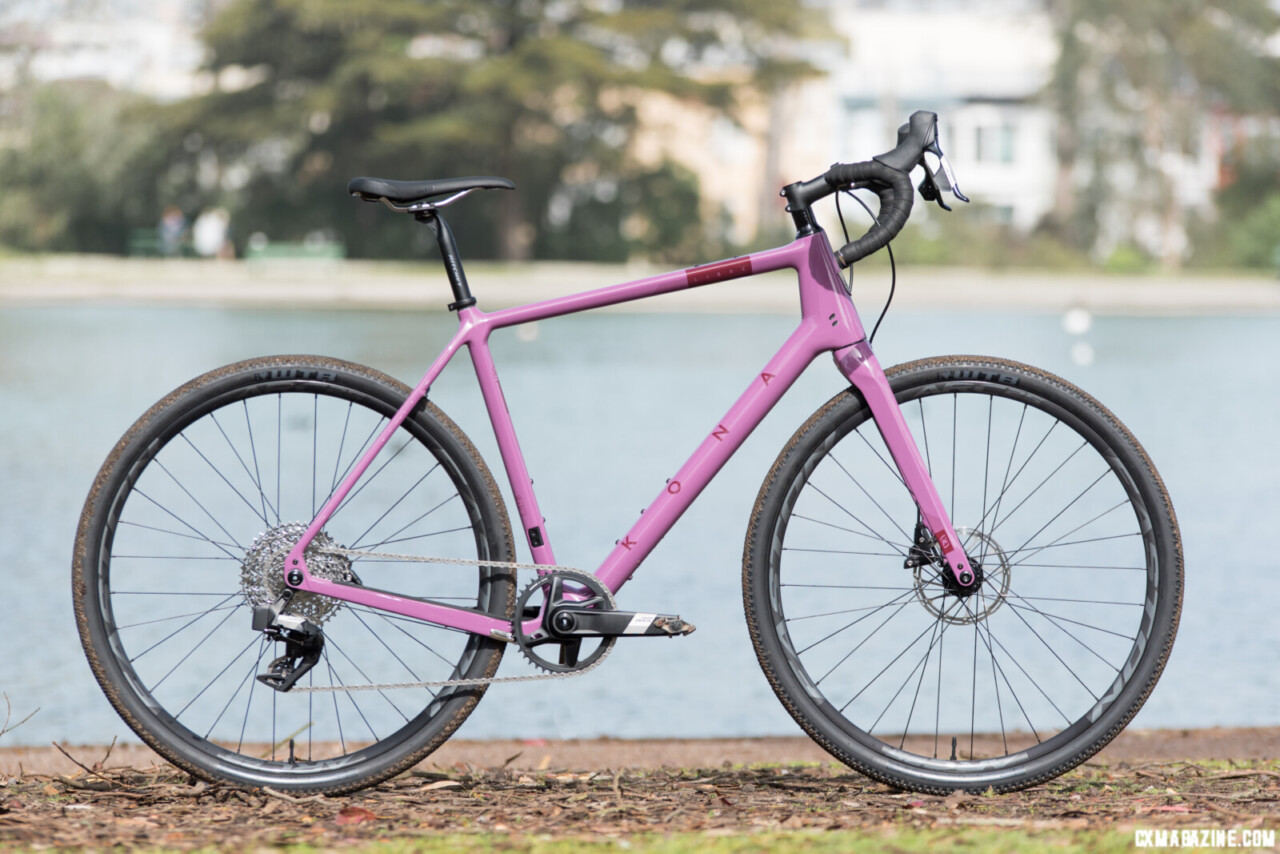
The 2025 Kona Libre CR size “56”. SRAM Rival AXS. ©C. Lee/Cyclocross Magazine
Our review bike is size 56, with a 54cm seat tube and a 59cm effective top tube. It’s unclear where the 56cm moniker comes from, but I would consider this frame a “large” compared to the sizing of other similar bikes. The long top tube contributes to the 400mm reach and the long 651mm front center. For comparison, the 2018 Kona Major Jake was rangey for a cyclocross bike at 622mm front center, and the Sage PDXCX we just reviewed is 604mm for the front center.
The actual chainstay length is 43.5cm, contributing to a 107.6cm wheelbase. The right chainstay is dropped to allow more tire clearance around the crankset. According to Kona, the chainstay safety clearance is 6mm, and the Libre CR fits 50mm tires and 45mm tires with full fenders, though in my opinion, there is room for a bit more.
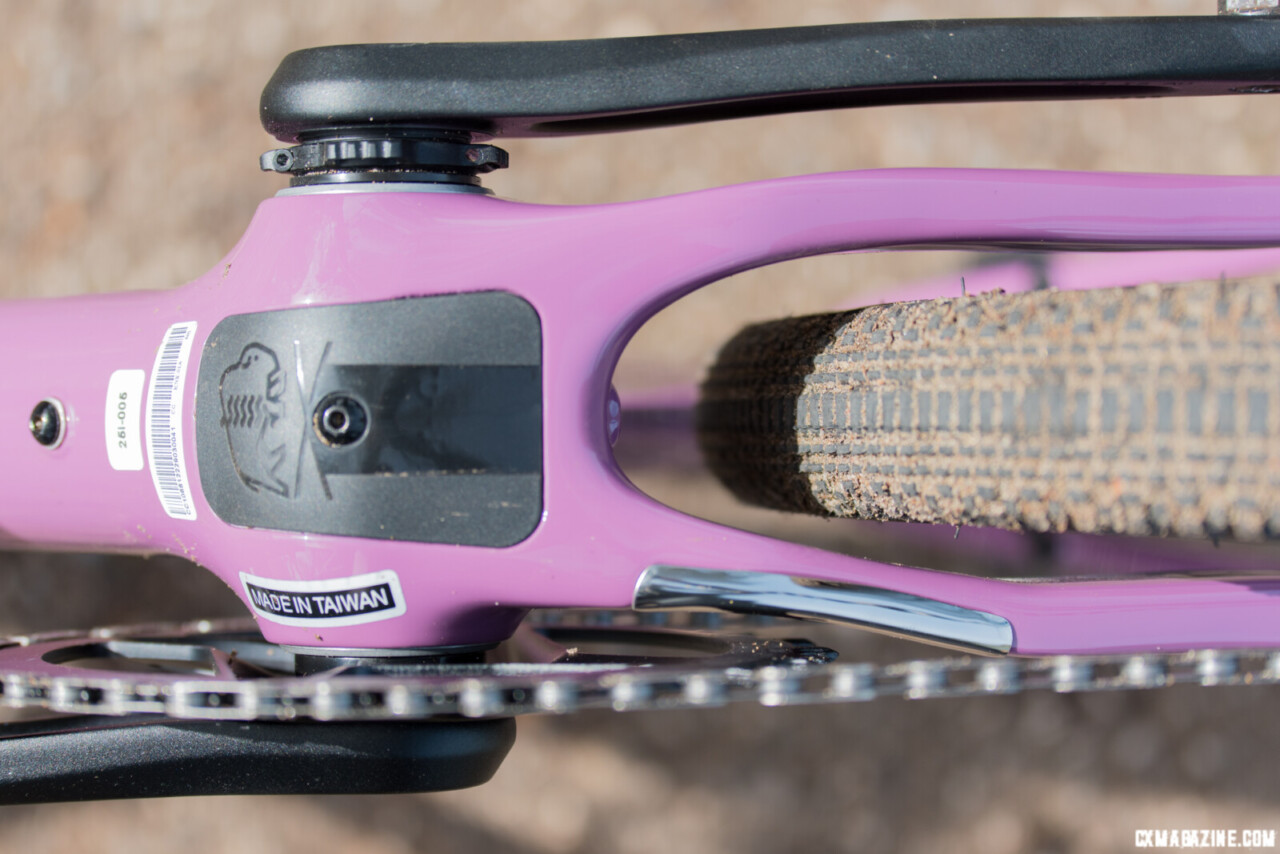
Kona Libre CR with a 45mm tire in place. The trapdoor is for control line access. ©C. Lee/Cyclocross Magazine
The 186mm head tube is tall, with a large wedge-shaped profile. Stylistically, this headtube shape gives the Libre CR family resemblance to the Kona Ouroboros. The stack measurement resulting from this tall headtube is 620mm, so you won’t need many spacers under the stem to bring the bars up to typical height. If you’re a “slam that stem” rider, you can easily drop it below the spacers, but it might not get you to a super aero position given the taller head tube.
The drop to the PF 86.5 bottom bracket is 72mm, about average for a gravel bike. The rear end is UDH-compatible, and there is a provision for a mechanical or wireless front derailleur.
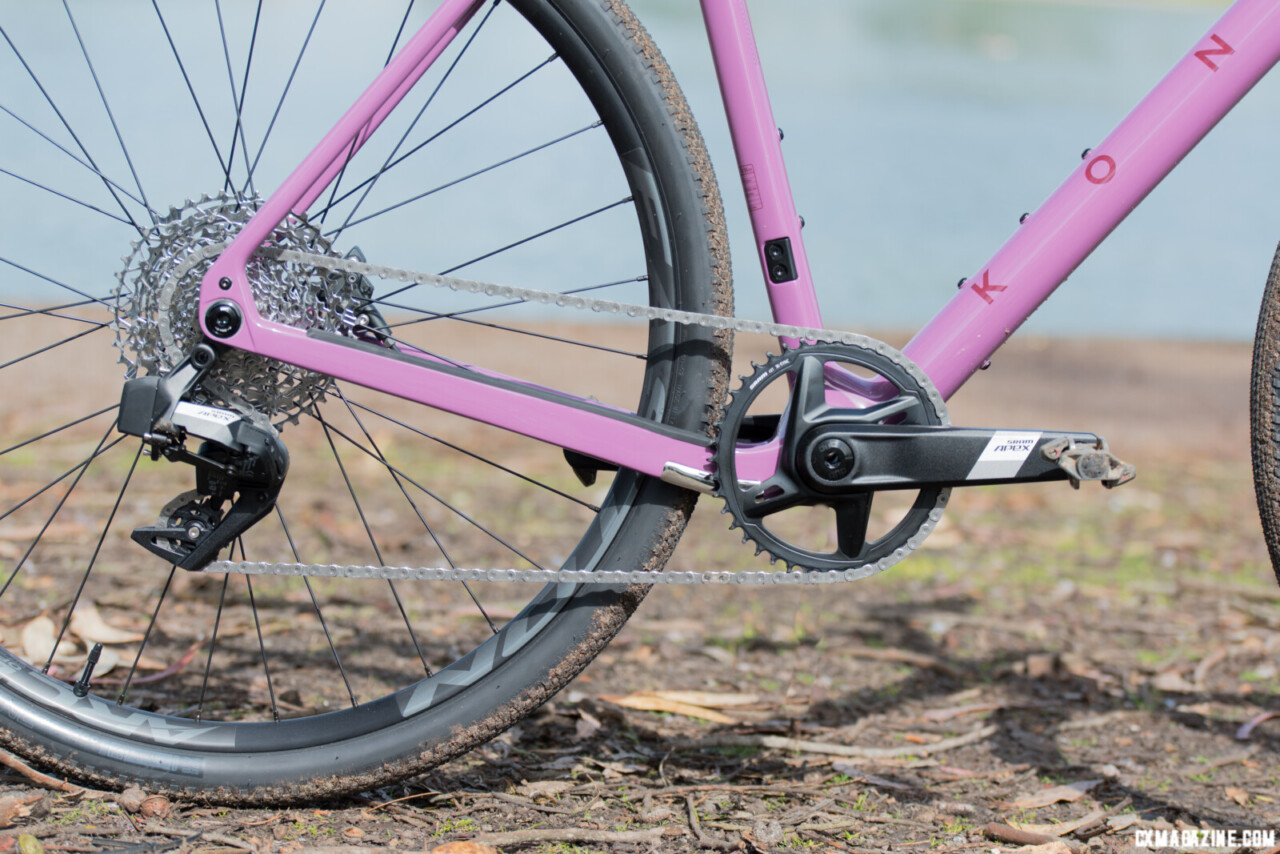
SRAM Apex AXS drivetrain on the Kona Libre. 43.5cm chainstays. ©C. Lee/Cyclocross Magazine
Steering Geometry
With its 70.5-degree headtube angle and 50mm offset fork, the calculated trail of the Libre CR is 74mm (mechanical trail 70mm) with a 45mm tire. Interestingly, this puts the steering geometry the same as the last Kona Major Jake with a 33mm tire. Trail figures in general get longer with larger tires. All this means that if you like the Jake as a ‘cross bike, the steering of the Libre CR as a gravel bike will feel familiar. That particular Kona Jake was more “slack” than typical ‘cross bikes, with trail figures closer to 65mm.
Kona Libre CR Accessory Mounts
There are three sets of bottle mounts, one on the seat tube and the others on the downtube. The set atop the downtube has 3 screws set apart for flexible bottle cage mounting, including an extended cage for large format bottles. The other downtube bottle bosses are underneath, just ahead of the bottom bracket. Other accessory mounts include fender screws and a top tube bag mount. The fork is notably devoid of mounting screws, as is the underside of the top tube. The front of the fork crown has a threaded boss for a light or other accessory. You will find fender mounting bosses on the fork and rear end. The rear features a removable seat stay bridge, allowing for a more open, bridgeless look. That bridge will not be a limitation for aerodynamics, tire clearance, or mud, so making it removable is mostly for aesthetic purposes.

A removable seatstay bridge for fender or rack mounting. ©C. Lee/Cyclocross Magazine
Kona CR: The Build
The new Libre CR has a SRAM Apex XPLR AXS 12-speed drivetrain and controls. That includes a 42T X-Sync chainring and an 11-44 XPLR PC1231 12-speed cassette.
The Apex 1 DUB Wide crank arm length is 172.5mm. DUB Wide sets the chainline 2.5mm wider for tire clearance, something Shimano did earlier with the introduction of GRX. The Direct Mount chainring on the DUB wide crank sits in position for compatibility with SRAM Eagle Transmission. The 150mm q-factor is 5mm wider than the SRAM non-wide road crank, which is 145mm. If you want to run a double chainring setup, the entire drivetrain must be upgraded to SRAM Rival or better with a compatible road-wide front derailleur and matching road-wide cranks to run double chainrings. Of course, the rear derailleur and cassette must be compatible with the double chainring setup.
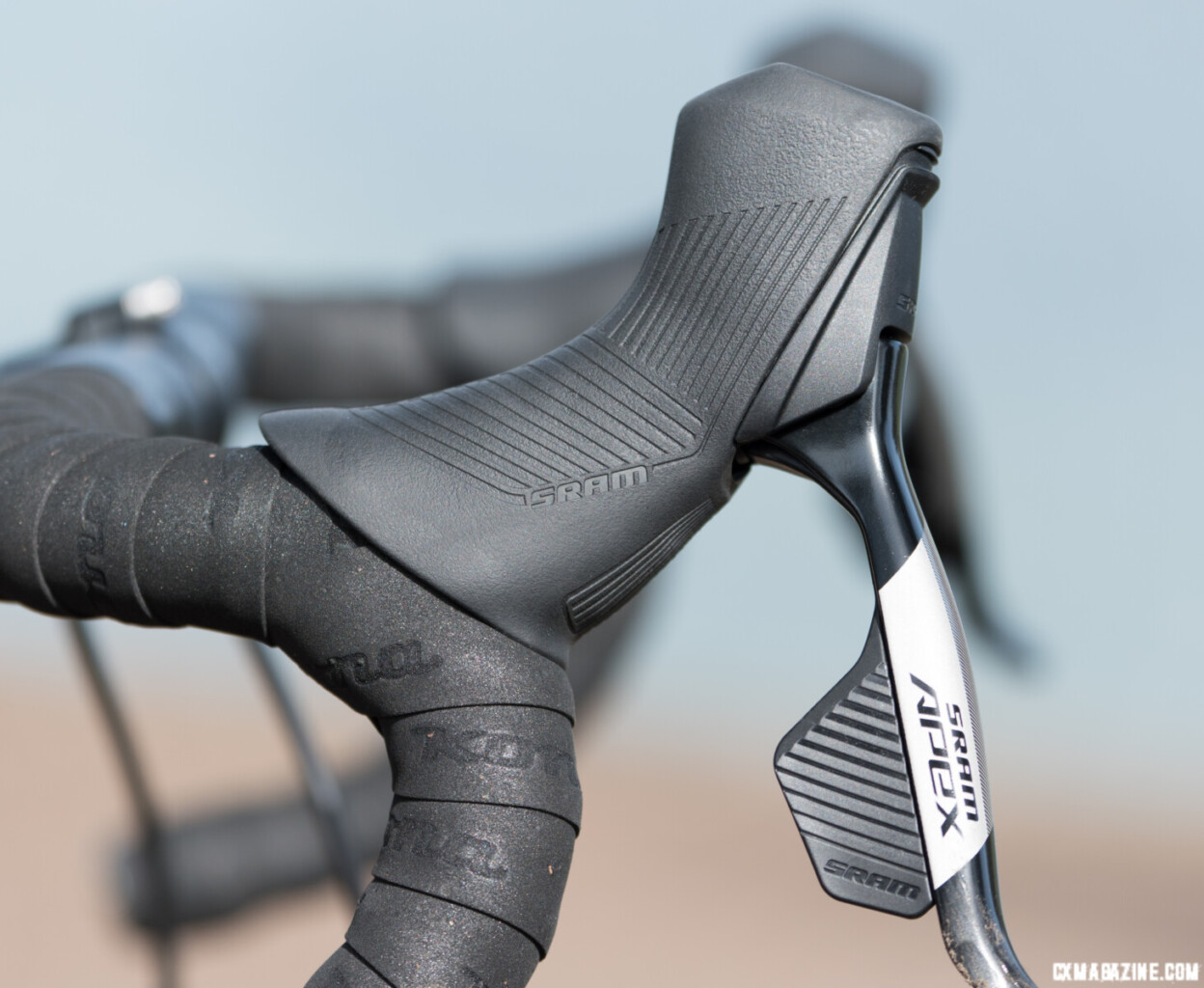
SRAM Apex AXS on the Kona Libre CR. ©C. Lee/Cyclocross Magazine
SRAM Apex flat mount brakes with 160mm 6-bolt Centerline rotors handle speed control. The handlebars are 46cm Ritchey Butano aluminum. The 46cm measurement is at the brake hoods, and the bar flares to 52mm at the drops. The matching Ritchey 4-Axis-44 aluminum stem is 8cm long with a =/- 6 degree rise.
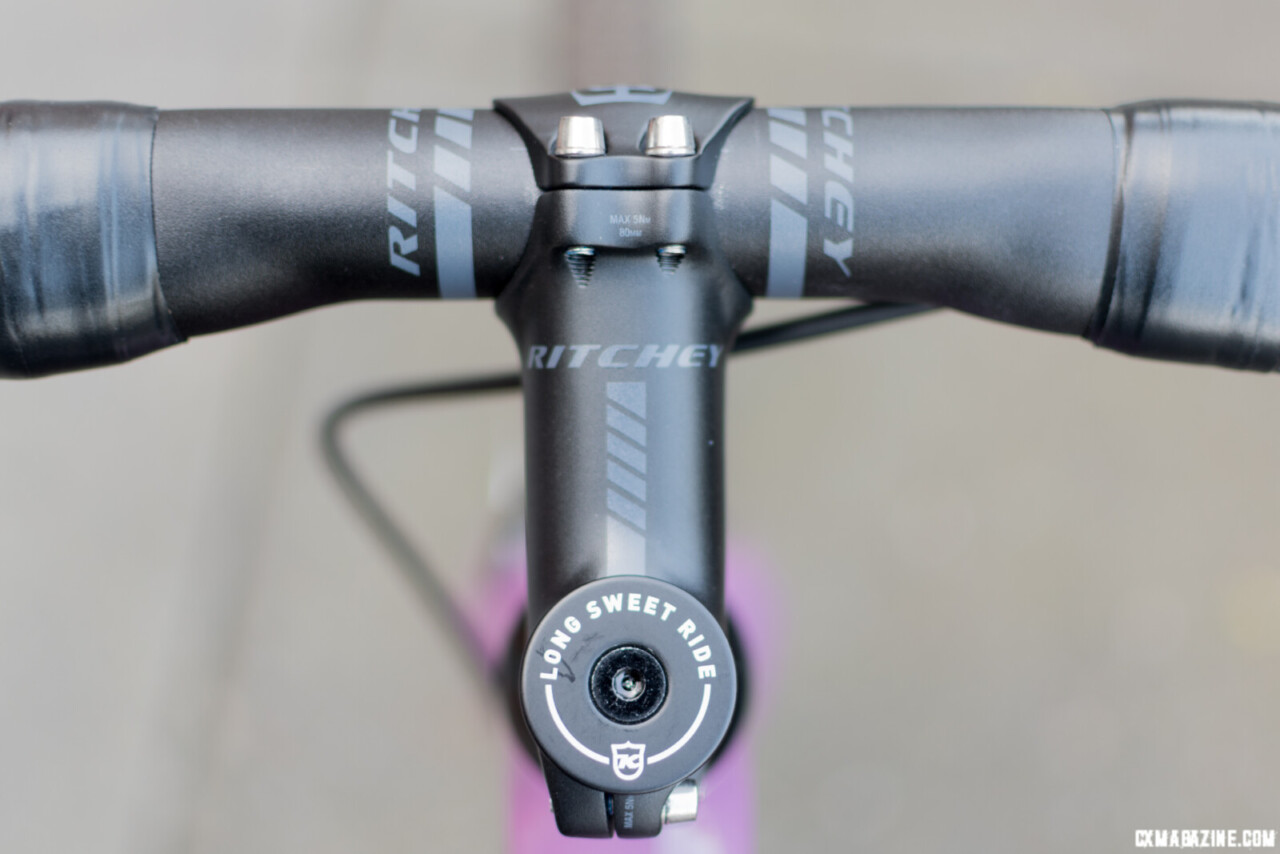
Ritchey aluminum handlebar and stem on the Kona Libre CR. ©C. Lee/Cyclocross Magazine
The Ritchey Link 27.2mm seatpost is 400mm long with a Ritchey WCS 2-bolt clamp. The two bolts are side by side, not front and back. The saddle is a WTB SL8 with cro-moly rails.
The wheels have Easton ARC25 rims with 32 2.0/1.8/2.0 spokes built in a cross-3 pattern around Formula hubs. WTB Vulpine 45mm x 700C TCS tubeless-ready tires wrap the rims. The Easton Arc25 claims to be 445 grams, which is reasonably light for a gravel rim. Built with 2.0/1.8 double butted spokes in a cross-3 pattern, it makes for a robust build on paper. These are not Easton pre-built wheels, but a build chosen by Kona. We estimate that the total wheel weight is 1820 grams.
The tires are 700C X 45mm WTB TCS Light.
Total weight 20.1 pounds as equipped.
Kona Libre CR: The Ride
I rode the Libre CR on varying courses and in varying weather over 6 months. I did not modify the build, except for substituting an external activation 100mm dropper post for selected trail riding. I rode the tires tubeless, with pressures from 18psi to 28psi depending on terrain. I am 5’10” and 153 pounds. The bike was on loan from Kona, and it is the closest bike they have to a cyclocross bike in their current lineup.
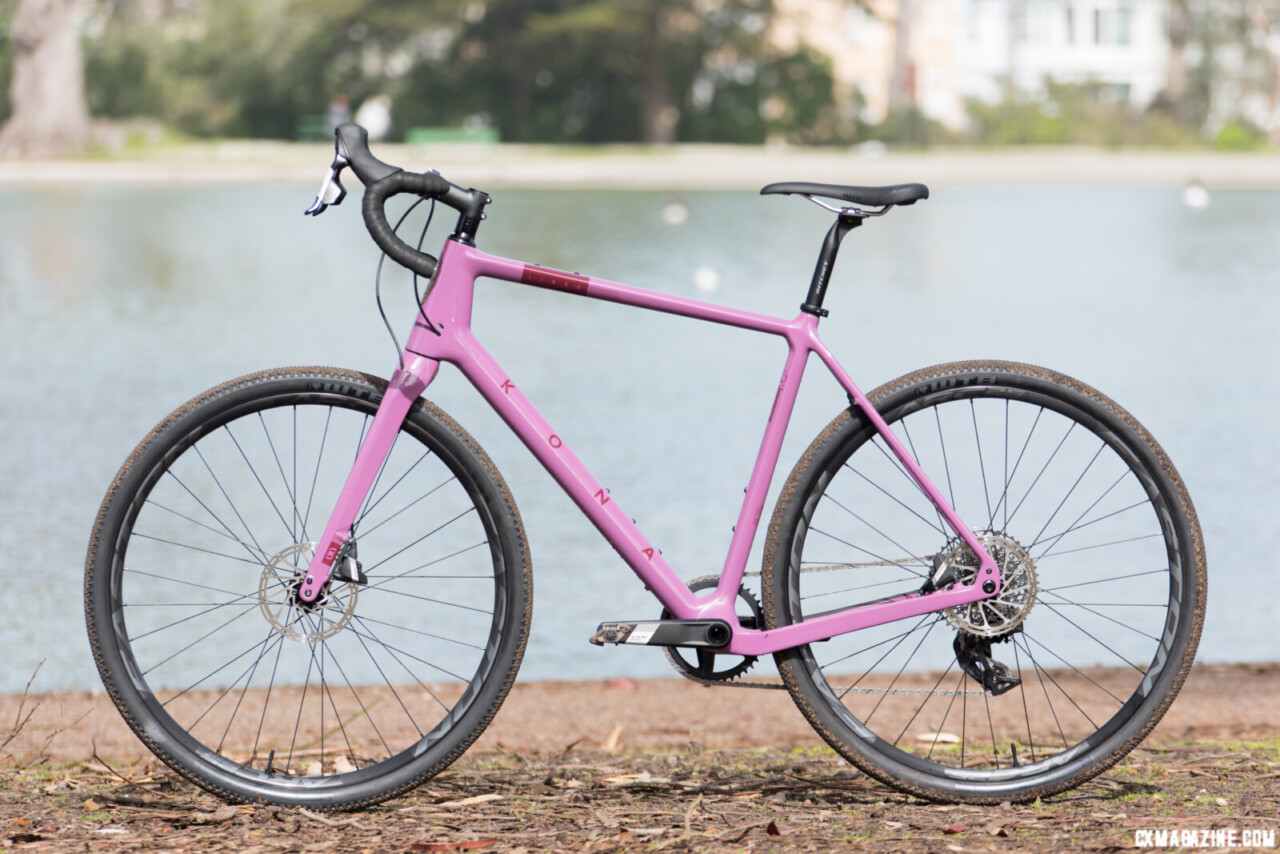
All-road, fast-gravel, adventure, or cyclocross? The Kona Libre CR. ©C. Lee/Cyclocross Magazine
Kona Libre CR: Is Slacker Better?
Kona is the only one to offer a relatively slack front end on a cyclocross bike, with the discontinued 2018 Major Jake. Cannondale’s 2017 Super-X pushed the front center out with a slacker head-tube angle and longer fork rake, but the trail measurement dropped back to a normal-for-cyclocross 62mm. As mentioned, this new Kona Libre shares the steering geometry with the elusive 2018 Major (Super was the up-scaled model) Jake cyclocross bike. I own that Major Jake model, so the steering of the new Libre CR is familiar. However, the Libre has a relatively long front center with a high stack, long reach, and long chainstays. That still puts the rider well between the wheels, but on a long bike.
Having just reviewed the quick-handling Sage PDXCX with its high bottom bracket and short wheelbase, the ride of the Libre CR is starkly different. Long and low, the bike feels planted. The front wheel is well forward of the rider, so there is no toe overlap. When the Libre CR points downhill, the long front center offers confidence that you won’t go over the bars, and the longer trail keeps the wheel straight with less effort. Add a dropper post, and the Libre CR descends steep trails well for a drop bar bike. The front-end geometry is a nice balance for a fast gravel ride with technical features that require downhill stability with nimbleness if the course is tighter.
The 43.5mm chainstays offer tire clearance and balance the rear wheel position with the long front center, keeping rider weight distributed appropriately. The wheelbase is around 6cm (over 2 inches) longer than a cyclocross bike. Though rangy, it doesn’t feel like it on the trail. Even in tight turns, the Libre CR gets around easily. You definitely have to go slower and work a bit harder through a series of tight chicanes or repeated flat switchbacks.
Off the Line: Acceleration and Climbing
Despite the long chainstays, the Libre CR’s acceleration and climbing are not sluggish. The bike does not shoot out from under you when you hit the gas, but it doesn’t hold you back. So many factors play into accelerating a bike, especially wheel and tire weight, rolling resistance, and aerodynamics—the 1800-gram wheelset and 580 WTB Vulpine S tires don’t help in this area. I swapped the wheels and tires for a 13450 gram set with 410 gram 38mm ‘cross tires. The 790 gram (1.74 pound) savings made the bike more sprightly and nimble. Handling did not change, but you can throw the bike around more easily, giving the perception of nimbleness.
Twenty-one pounds is not that heavy for a bike, and dropping it to less than 20 pounds with a change to a light wheel and tire combination with performance improvement is remarkable for a bike equipped with SRAM Apex, the company’s lowest-end groupset. When climbing steep sections at over 15% on a loose, bumpy surface that requires you to stay seated for rear tire traction, the bike stays on its line better than I anticipated with its long front center and high trail figure. Still, steep climbs with the Libre CR require more concentration on weight balance between the wheels than a ‘cross bike with a shorter trail and front center, such as the Sage PDXCX, most recently reviewed.
Kona Libre CR: Less for Adventure, More for Speed
The Libre CR has few mounting points. There are no mounting points for frame bags or racks, only bottle cages, a top tube bag, and fenders. There’s plenty of room to strap bags, but the Ouroboros is a better choice from Kona for off-road adventure riding and bike packing.
The high stack means that even if you slam the stem, you may not get the bars as low as a road bike, depending on your saddle height and preferences. I would argue that you can use the drops more effectively and get low enough, but I’m not a spring chicken or World Tour rider. I rode the Libre CR with 35mm spacers below an upturned stem. That put the top of the bar level with my saddle. It felt high initially, but I got used to it and used the drops more often. On gravel, I typically do not like to be in as low a position as when on pavement anyway. I also want to comfortably hold an efficient position on your bike when you’re head-down laying down watts and I found that position with the Libre CR.
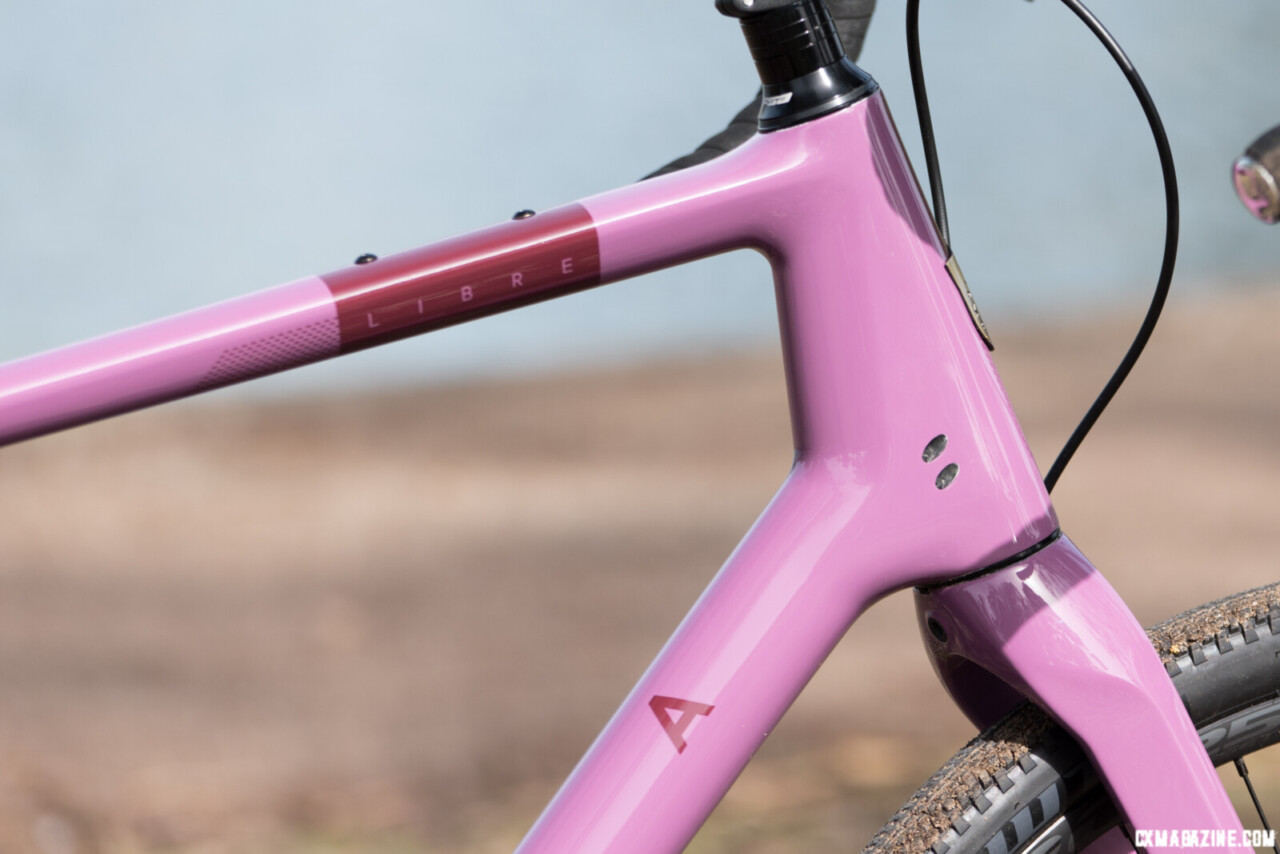
The tall headtube of the Libre CR has the same shape as the Ouroboros. ©C. Lee/Cyclocross Magazine
SRAM Apex AXS
Apex is SRAM’s lowest-tier drop-bar component group. The weight savings of an upgrade to SRAM Force AXS is 200 grams, with an expenditure of $645 more. At the OEM level, that may be a bit different. A good comparison of the weight and cost of SRAM AXS groups, not including Red, can be found here. In use, the shifters and brakes feel no different than with SRAM Red and Force AXS 12-speed we used on recently reviewed bikes. The 11-44 cassette yields a 396% gear spread in 12 fairly evenly spaced steps, a bit wider in the low range.
The wheels have a bombproof build, and there were no problems. I would definitely opt for a lighter set of wheels for this bike, even with the underbiking that I like to do. The WTB Vulpine is a good all-around gravel tire with a tight knob pattern across the tread. The center knobs are consolidated into one row for smoother riding on hardpack and pavement. I found the Vulpine quite good on most dry surfaces, but prefer a more widely spaced knob pattern for some trails with loose-over-hard conditions, and when the trails are muddy.
The Vulpine S is available in the same sizes with almost identical weights but with a smooth center tread that will give less buzz and lower rolling resistance on pavement sections. This is WTB’s answer to the successful Specialized Pathfinder.
Kona Libre CR Verdict
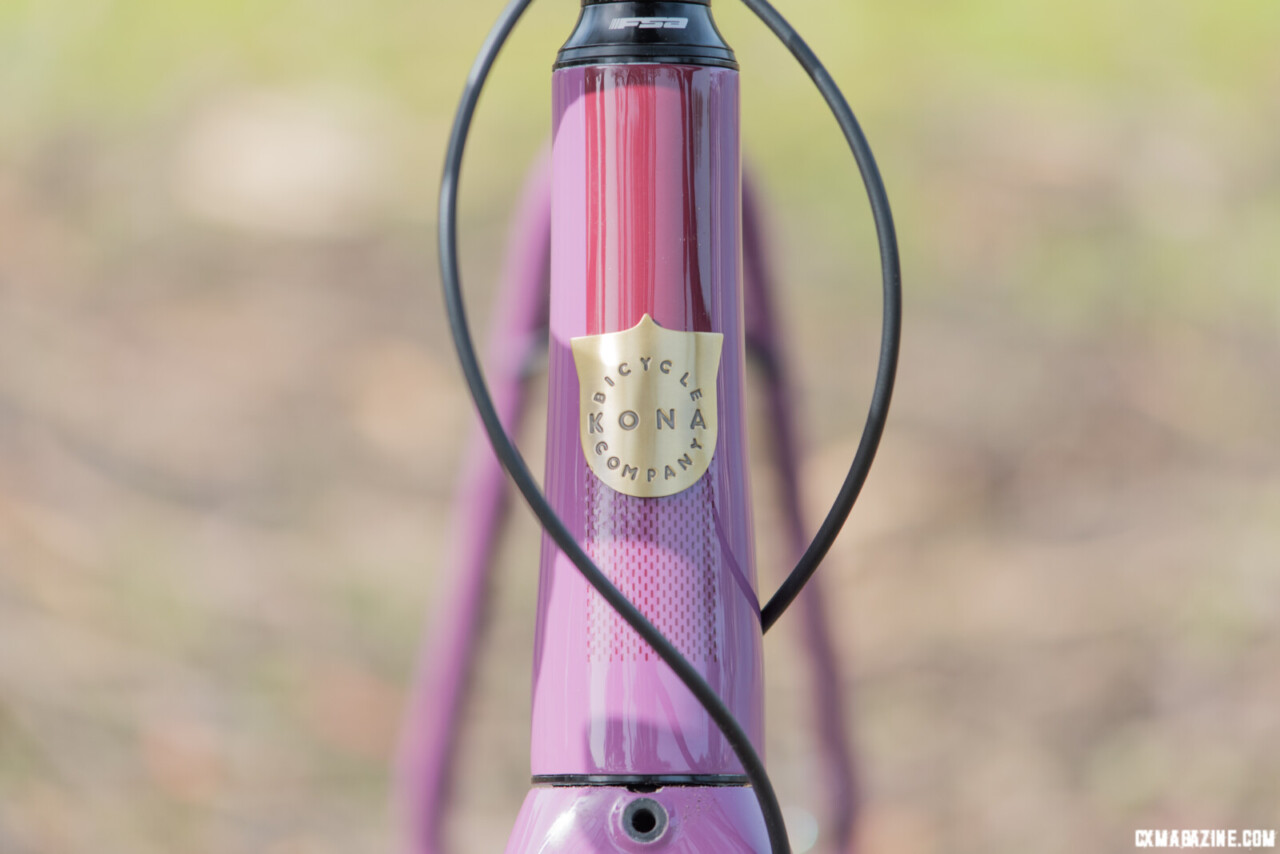
Kona Libre CR carbon gravel bike with SRAM AXS
If you can’t decide which gravel bike to ride or buy, the Libre CR is one to look at. It’s versatile for day rides and can pack a load if you want to do some bike packing. It’s not a dedicated gravel adventure bike, but more of an all-around mixed terrain bike that you can ride all day, race, or even race in a cyclocross race.
The long, low geometry is fun and capable of riding over all terrain, even some XC mountain bike trails if there are no big drops or other significant technical features. I found pairing the Libre CR with a short travel dropper post increased the fun factor on these trails, and gave me more confidence over the more technical sections. The geometry of the Libre CR is not suspension corrected and Kona will void the warranty if a suspension fork is paired with the Libre CR. The Kona Ouroboros is a better choice if you want a suspended gravel machine. If you want a bike more dedicated to one-day gravel racing, the Felt Breed leans more that way.
Out of the box, the Libre CR is light and well-equipped. Functionally, it does not require any upgrades. If you are a light rider like me, a lighter set of wheels will boost the performance of the Libre CR.
An aluminum version of the Libre is poised for a redesign and will be coming soon, though no release date is available yet. The aluminum version of the Ouroboros came out about a year after the carbon version, so expect the same timeline.
Kona Libre CR Specifications
MSRP: USD 4,399
Frame: Carbon fiber monocoque, 12 X 142mm through-axle, PF 86.5 BB, SRAM UDH compatible
Fork: Kona Carbon, 12 X 100 through axle
Weight: 20.1 pounds as tested, without pedals or tubes
Shifters: SRAM Apex AXS
Crankset: SRAM Apex 1 DUB Wide, 40T, 172.5mm arm
Brakes: SRAM Apex D1 flat-mount calipers, SRAM Centerline 6-bolt rotors, 160mm front and rear
Cockpit: Ritchey Butano aluminum 46cm, Ritchey 4-Axis-44 8cm stem, aluminum
Seatpost: Ritchey Link, 27.2mm diameter
Saddle: WTB SL8, cro-moly rails
Wheels: Easton ARC25 carbon rims, 32 X 14/15 ga double butted spokes, X3
Tires: WTB Vulpine TCS Light, 700C x 45mm
Warranty: Frame lifetime against manufacturer defects to the original owner, complete bicycle 1 year.
Country of origin: Taiwan
More Info: konaworld.com

